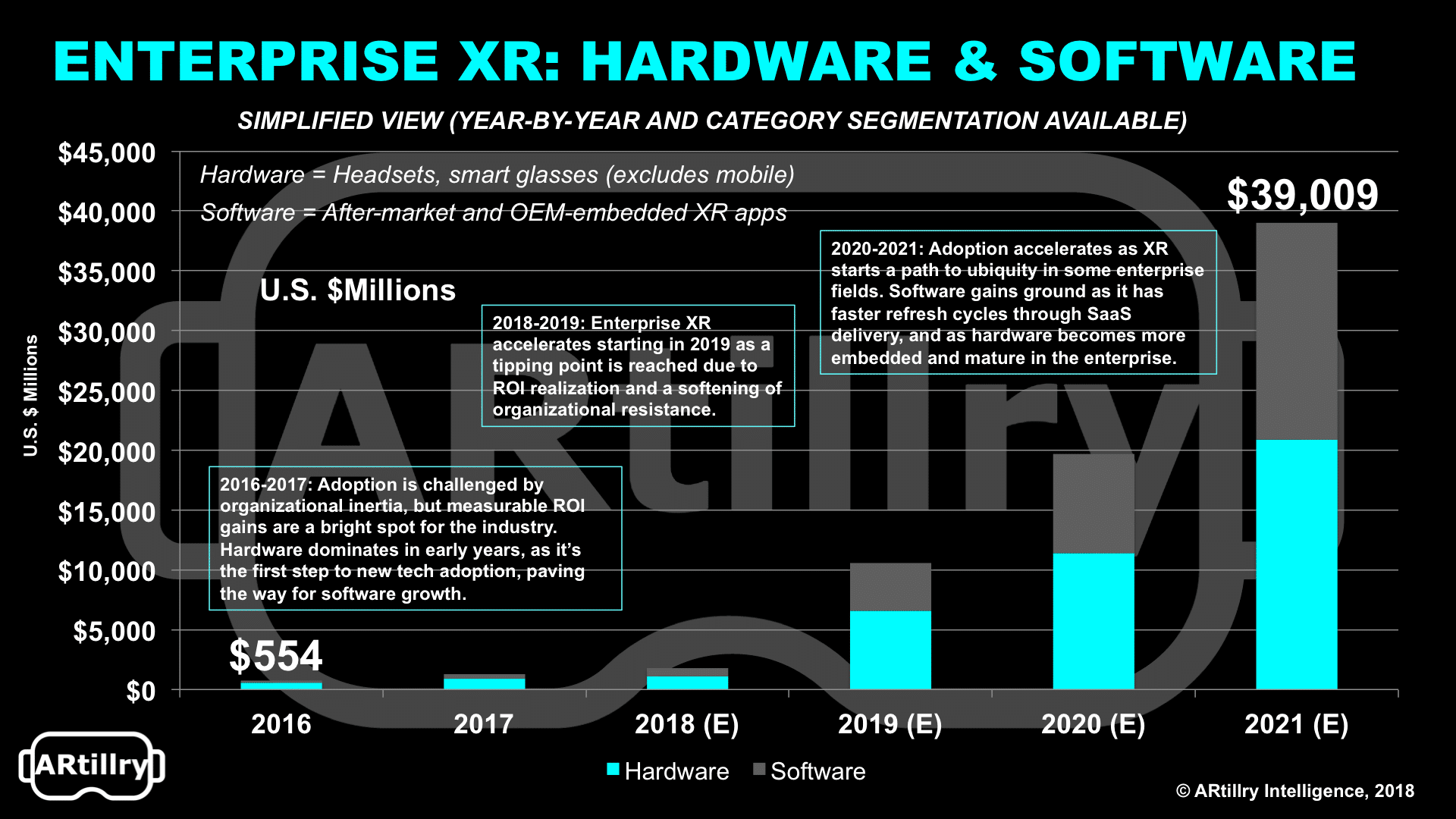
Enterprise AR has lots of growth ahead of it and offers a strong ROI, as we examined in last month’s Intelligence Briefing. But who’s adopting it today and how does that segment by business function? PTC breaks it down for us.
Specifically, manufacturing and service lead all enterprise functions for AR deployment, with 18 percent of respondents reporting use for each (n=107). That’s followed closely by design, product sales and training. Overall these functions distribute pretty evenly (chart below)

The results stand to reason, as manufacturing can benefit greatly from hands free assembly. That benefit usually comes in the form of time and error reduction. And as we quantified in the aforementioned report, AR’s project time reduction is generally within 15-45 percent.
It’s also interesting to note that enterprises reported an average of 2.3 different AR functions. That aligns with another finding in our report: Once AR is adopted in an organization, it can spread. This means initial barriers (culture, etc.) break down over time, which is good news.
Stay tuned for more data and analysis as players like PTC continue to report adoption, and as we continue to size the market. There will be a lot to watch if our projection is true that a tipping point could come in 2019, similar to the pattern we saw in enterprise smartphone adoption.

For a deeper dive on AR & VR insights, see ARtillry’s new intelligence subscription, and sign up for the free ARtillry Weekly newsletter.
Disclosure: ARtillry has no financial stake in the companies mentioned in this article, nor received payment for its production. Disclosure and ethics policy can be seen here.
Header Image Credit: Scope AR
